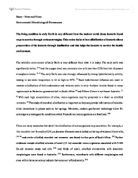Fermentation Test
This test is designed to see the ability of the microorganism to metabolise carbohydrates.
E.coli, P.vulgarus, S.aureus and B.subtilis were inoculated in three different media; sucrose nutrient broth, glucose nutrient broth and lactose nutrient broth. These were incubated for one to two days at 37˚C.
Hydrolysis Tests
E.coli and B.subtilis were inoculated on a starch agar plate and a skim milk agar plate, and then incubated at 37˚C for two days.
The starch plate was flooded with iodine to see if the starch had been hydrolysed to dextrins. Unstained areas indicated hydrolysis had occurred.
The skim milk agar plate was examined for clear zones around the colonies which indicate that casein, the milk protein had been metabolised.
Proteolysis of Gelatin
E.coli, S.aureus and B.subtilis were each inoculated in separate tubes of nutrient gelatine by stabbing the inoculum on a sterile needle to the bottom of the tube. These were incubated for two days at 20˚C.
The tubes were then placed in an ice bath to inspect the presence or lack of gelatinase activity.
Results
Fermentation Test
Hydrolysis Test
Proteolysis of Gelatin
Discussion
-The carbohydrate broths contained an acid/alkali indicator (phenol red), which changes from red to yellow in the presence of acid. When the necessary enzymes metabolise the sugars present, organic acids are produced resulting in a change of colour in the medium during incubation due to a lowering of pH. A Durham tube was also in the medium as Carbon Dioxide and Hydrogen gas is produced if the microorganism is able to fully metabolise the sugar, which is trapped in the tube. E.coli was able to fully metabolise the sugars in the Lactose Broth and the Glucose Broth as indicated by the production of gas and acid, but not the Sucrose broth. P.vulgaris was not able to metabolise the sugars in the Lactose Broth, it was able to partially metabolise the Sucrose and Glucose Broths as indicated by the acid produced and the small amount of gas produced in the Glucose Broth. S.aureus was able to fully metabolise the sugars as there was evidence of a colour change and gas was produced in the Glucose Broth and partially metabolise the Sucrose and Lactose Broth as indicated by the production of acid.
-Substrates with very large molecular weights for example starch and casein cannon be transported into the cell to be metabolised via intracellular enzymes, instead they must first be broken down to monomers outside the cell, then transported into the cell to be further metabolised. E.coli is unable to metabolise the casein in the skim milk agar plate as it does not produce extracellular proteolytic enzymes nor can it metabolise the starch in the starch plate due to the lack of the ability to produce extracellular amylases. This is evident as although there is growth on the plates there are no signs of clearing around the colonies, which indicate metabolism has occurred. However for the B.subtilis there were signs of the substrates being metabolised on both plates, as there were clear signs of clearing around the colonies.
-Gelatin is metabolised by gelatinase, an extracellular enzyme. When gelatine is metabolised it loses the properties that keeps it as a solid below 35˚C. B.subtilis and S.aureus have the gelatinase enzyme, as the gelatine media did not set when placed in the ice bath, indicating that the gelatine had been metabolized. E.coli however set when placed in the ice bath, which meant that it did not metabolise the gelatine due to lack of gelatinase.
Certain microorganisms produce extracellular enzymes; these can have both a beneficial and harmful effect in nature and the food industry. Extracellular digestion is important in nature as extracellular enzyme producing bacteria is present in the digestion system of mammals and assists in the breakdown of food molecules for use, for example extracellular enzymes in the rumen of cows are used to break down cellulose. However these can also be harmful as they can produce toxins and carcinogens, causing illness which can be quite severve. exc overriping bananas toxins poison assassin personnel








